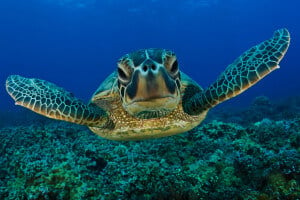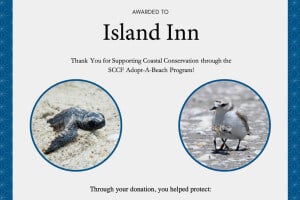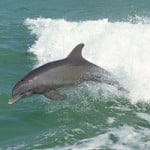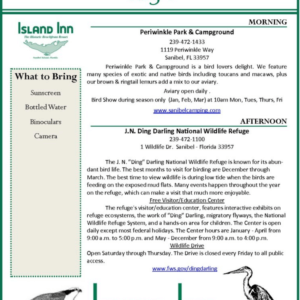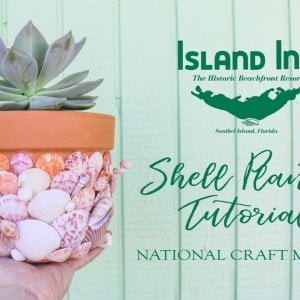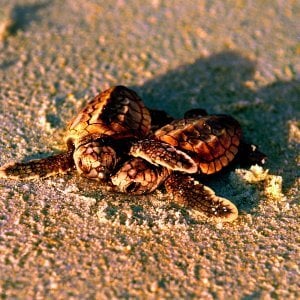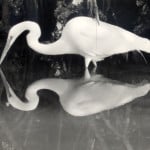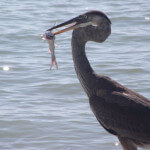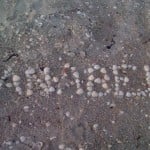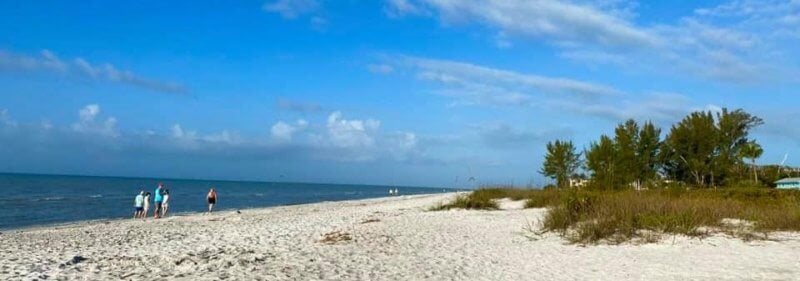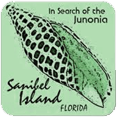Sea turtles are among the world’s oldest living creatures, having inhabited Earth’s oceans for more than 65 million years. These gentle, long-lived reptiles have fascinated people around the world. Sanibel Island’s subtropical beaches are a prime nesting area for five species of sea turtles: Green turtle, Loggerhead, Kemp’s Ridley, Leatherback, and Hawksbill. Each of these species is endangered and protected by both federal and state laws and agencies. In Florida, volunteer and commission agents monitor the turtles and their nests, tracking and estimating births and deaths and providing data on the effects of Sanibel Island development and along the Gulf coast in general.
Sea turtles come ashore to build their nests between May and October. Beginning at dawn each day during this period, Sanibel’s 18 miles of beaches are swept for new turtle activity from the previous night. If a new nest is found, it is marked for monitoring and protection until the eggs hatch (between 45 and 90 days, depending on the species and the temperature).
Sea turtle eggs typically hatch at night. After the hatchlings dig their way out of their sandy nest, they use shadows and light (sunrise, the moon) to find their way back to the shoreline. And although each nest may contain as many as 200 eggs, the large number of predators awaiting them between the nest and adulthood means that very few turtles from each brood reach maturity.
For those that do make it through their vulnerable years, sea turtles can live 50 years or more. While they are ungainly on land, they swim gracefully and fast, 15 miles per hour for adults. The shell of a full grown male can be three feet or longer and weigh from 250 to as much as 1000 pounds! Mature females have been tracked as swimming more than 1000 miles to return to the beach where they were born so that they can lay their eggs and begin the cycle again.
Around the world, sea turtles face poachers, lack of suitable nesting sites because of overdevelopment, pollution among other dangers. Scientists are studying the turtles their habitats and behaviors in an effort to assist in the species’ survival. Luckily, weather conditions in 2013 were not as harsh in years past and reflected in the sea turtle population. The year was recorded as the third-highest turtle nesting year on record for Sanibel and Captiva Islands. Sanibel Island documented 23 green turtle nests and close to 27,000 hatchlings.
Reserve your room today with Island Inn and witness firsthand the magical journey of the sea turtle.

